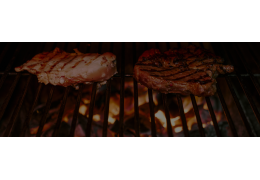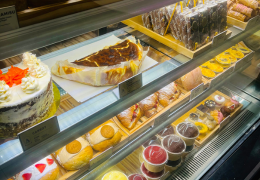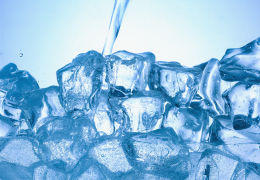Low Temperature Cooking in Restaurants: A New Frontier in Cooking
What is Low Temperature Cooking?
Low-temperature cooking is a process that involves cooking food in water at temperatures ranging from 50°C to 85°C, depending on the type of ingredient. The food is placed in vacuum-sealed bags and immersed in a water bath that maintains a constant temperature for long periods of time, which can vary from 2 to 24 hours, depending on the characteristics of the food.
The sous vide technique has French origins and, although it was introduced in the 1970s by some innovative chefs, it has only become popular in the last few decades thanks to the advancement of temperature control technologies and the greater accessibility of professional equipment.
How Does Low Temperature Cooking Work?
1. Food preparation: The food (meat, fish, vegetables, etc.) is placed in a special bag which is then vacuum-sealed. This step is essential because the bag prevents moisture and juices from being lost during cooking, preserving flavors and organoleptic properties.
2. Setting the temperature: Once the food is ready, it is immersed in a water bath that is heated to the desired temperature. Temperature precision is essential to achieve perfect results: a device called an immersion circulator (circulator) continuously adjusts the temperature of the water to ensure it remains constant throughout the cooking process.
3. Slow and prolonged cooking: Cooking is done slowly, keeping the food at a temperature that enhances its tenderness without overcooking or drying it out. The result is a juicier, tastier and perfectly cooked food, with a uniform texture.
4. Finishing: Once the food has been cooked, it can be finished at a later time, for example by briefly searing on a griddle or in a pan to develop a tasty, golden crust.
The Benefits of Low Temperature Cooking
1. Precise cooking control: One of the main reasons restaurants love low-temperature cooking is the ability to have absolute control over the temperature. Meat, for example, can be cooked to perfection without the risk of being overcooked or undercooked. The cooking occurs evenly, keeping all the organoleptic characteristics intact.
2. Greater tenderness: Slow cooking allows the muscle fibers of the meat to loosen without drying out, maintaining an incredibly soft and succulent texture. The same principle applies to fish, which becomes more tender and flavorful.
3. Nutrient Retention: Because cooking occurs at relatively low temperatures and the food is kept under vacuum, nutrients such as vitamins and minerals are preserved much better than with traditional cooking methods.
4. Save time and reduce waste: In a restaurant, low-temperature cooking allows you to cook large quantities of food in advance, which can then be stored and finished when ordered. This reduces preparation time and allows for more efficient kitchen management, while also reducing food waste.
5. Sustainability: Since it reduces the risk of burning or wasting food, low-temperature cooking contributes to greater sustainability in the management of resources in the kitchen. In addition, chefs can maximize the use of less valuable cuts of meat that, thanks to this technique, become more tender and tasty
The Ideal Ingredients for Low Temperature Cooking
Low temperature cooking is extremely versatile and can be used on a wide range of ingredients:
· Red meats: Cuts such as tenderloin, sirloin, duck breast, and even cheaper cuts such as rib eye and flank steak, which typically require a long cooking time to become tender.
· Fish: Low-temperature cooking enhances the delicacy of fish, keeping it juicy without flaking. Salmon and tuna are particularly appreciated in this technique.
· Poultry: Chicken and turkey meat, often difficult to cook evenly, becomes incredibly tender and juicy.
· Vegetables: Some vegetables, such as carrots, potatoes and asparagus, can be cooked at a low temperature to bring out their natural sweetness and achieve the perfect texture.
· Eggs: Low-temperature eggs are a real delight, with the yolk remaining creamy and perfectly firm without drying out.
Challenges and Considerations
Despite its many benefits, low-temperature cooking also presents some challenges, including:
· Time: Being a slow process, low-temperature cooking requires careful planning. It is not suitable for situations where preparation time is limited.
· Expensive Equipment: Purchasing and maintaining the devices needed for low-temperature cooking (immersion circulators, vacuum bags, etc.) can represent a significant investment for restaurants, especially those that do not use the technique on a large scale.
· Staff training: Using this technique requires in-depth knowledge of timing and temperatures, and staff must be well trained to ensure that the results are always perfect.
Conclusion
Low-temperature cooking is quickly becoming an indispensable technique for modern restaurants, which seek to offer high-quality dishes with consistent and predictable results. Its benefits, including improved texture, preservation of nutrients and precise control of cooking, make this methodology a winning choice for chefs. Although it requires some equipment and time, the results it can deliver are well worth the investment. It is no wonder, then, that more and more restaurateurs are deciding to adopt low-temperature cooking in their kitchens.
Our website, ristorazione-refrigerazione.it specializes in the sale of professional catering equipment, including machinery dedicated to low-temperature cooking. In particular, you may find devices such as immersion circulators (which regulate and maintain the temperature of the water constant for sous vide cooking) and low-temperature ovens that allow for precise and uniform cooking of food.
These tools are essential for restaurants looking to implement sous vide, as they allow for levels of precision that are not possible with traditional cooking methods. You will also likely find vacuum bags, vacuum chambers, and other related accessories on the site.
Furthermore, the company could offer advice and support for choosing the right equipment based on the restaurant's needs, with solutions suitable for small or large professional kitchens.












